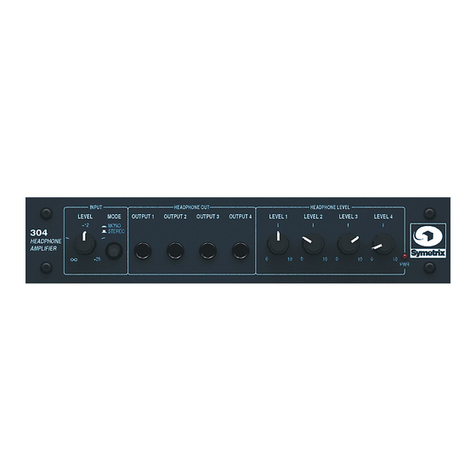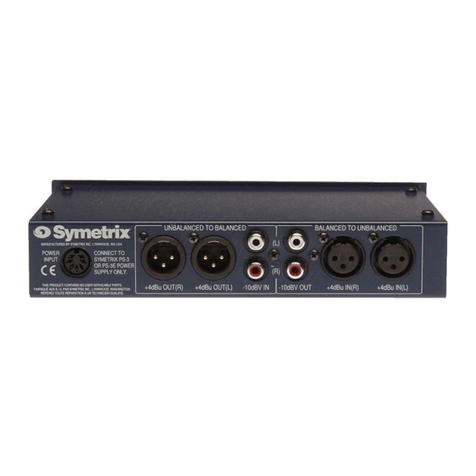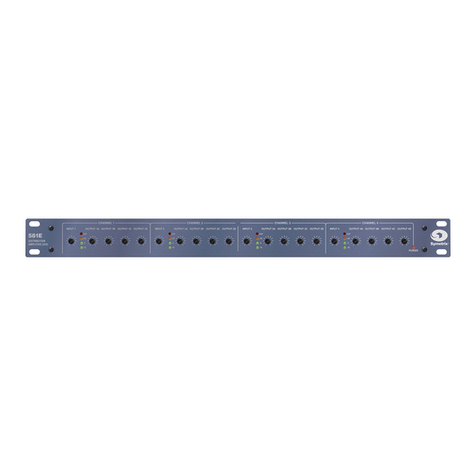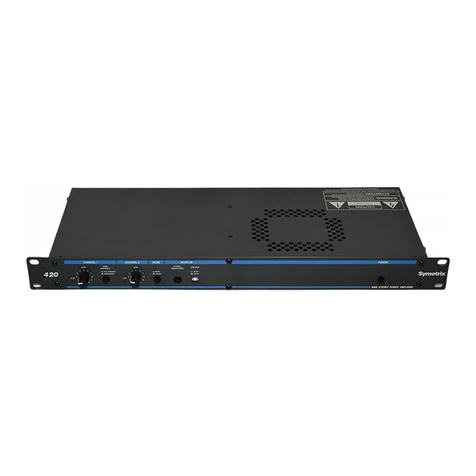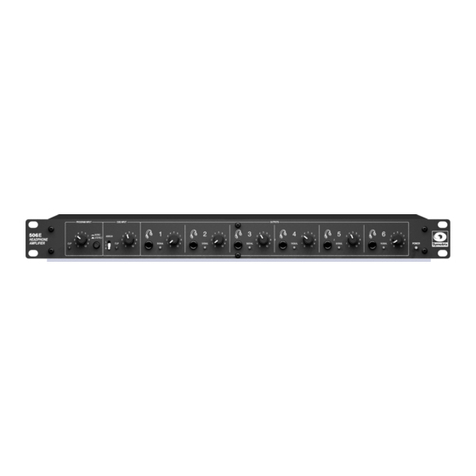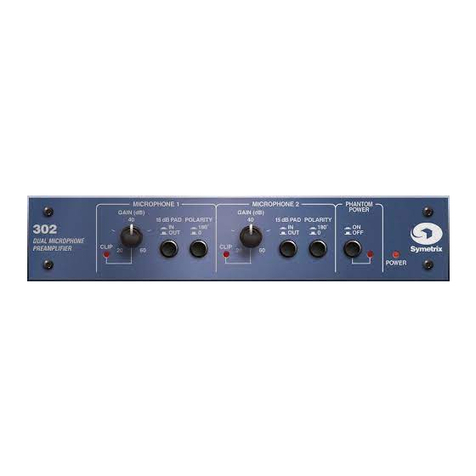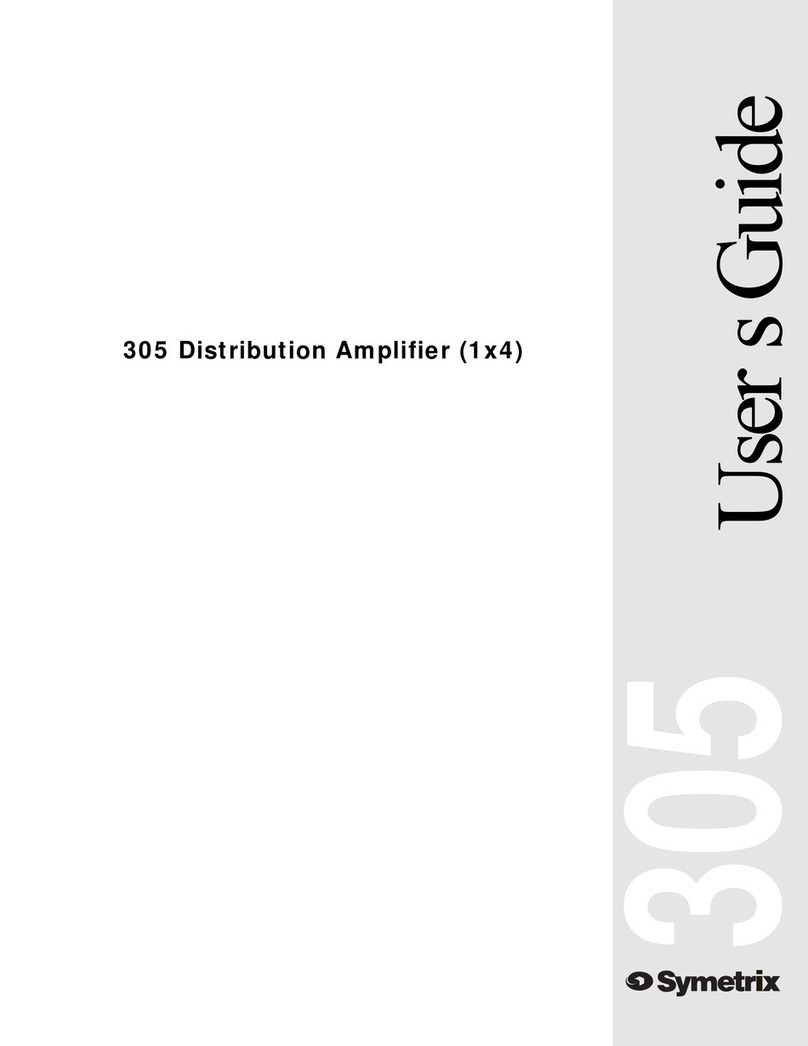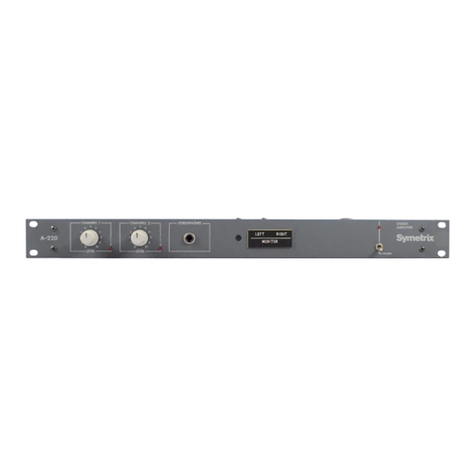
302
2
The information in this summary is intended
for persons ho operate the equipment as ell
as repair personnel. Specific arnings and
cautions are found throughout this manual
herever they may apply.
The notational conventions used in this
manual and on the equipment itself are
described in the follo ing paragraphs.
The lightning flash ith arro head symbol
ithin an equilateral triangle is intended to
alert the user of the presence of uninsulated
dangerous voltage ithin the product’s
enclosure that may be of sufficient magnitude
to constitute a risk of electric shock to per-
sons.
The exclamation point ithin an equilateral
triangle is intended to alert the user of the
presence of important operating and mainte-
nance (servicing) instructions in the literature
accompanying the 302 (i.e. this manual).
Caution To prevent electric shock, do not
use the polarized plug supplied
with the 302 with any extension
cord, receptacle, or other outlet
unless the blades can be fully
inserted.
Terms
Several notational conventions are used in this
manual. Some paragraphs may use Note,
Caution, or Warning as a heading. Certain
typefaces and capitalization are used to
identify certain ords. These are:
Note Identifies information that needs
extra emphasis. A Note generally
supplies extra information to help
you to better use the 302.
Equipment Markings
Operator Safety Summary Chapter 2
Caution Identifies infor ation that, if not
heeded, ay cause da age to the
302 or other equip ent in your
syste .
Warning Identifies information that, if
ignored, may be hazardous to
your health or that of others.
CAPITALS Controls, s itches or other
markings on the 302's chassis.
Boldface Strong emphasis.
Power source - This product is intended to
operate from a po er source that does not
apply more than 255Vrms bet een the po er
supply conductors or bet een either po er
supply conductor and ground. A protective
ground connection, by ay of the grounding
conductor in the po er cord, is essential for
safe operation.
Danger from loss of ground - If the protective
ground connection is lost, all accessible
conductive parts, including knobs and
controls that may appear to be insulated, can
render an electric shock.
In-line power supply - This product receives its
operating po er from the Symetrix PS-3 or PS-3E
po er supply. These are the only
po er supplies approved for use ith the
product. Do not connect the product to any
other in-line, or plug-in, transformer. The use
of other po er sources may cause damage to
the equipment or present a shock hazard to the
operator.
Operating location - Do not operate this
equipment under any of the follo ing condi-
tions: explosive atmospheres, in et locations,
in inclement eather, improper or unkno n AC
mains voltage, or if improperly fused.
tay out of the box - To avoid personal injury
or injury to others, do not remove the product
covers or panels. Do not operate the product
ithout the covers and panels properly
installed.
AVIS:
NE PAS OUVRIR
Il ne se trouve a l’interieur aucune piece pourvant entre reparée l’usager.
SEE OWNERS MANUAL. VOIR CAHIER D’INSTRUCTIONS.
S’adresser a un reparateur compétent.
RISQUE DE CHOC ELECTRIQUE
No user serviceable parts inside. Refer servicing to qualified service personnel
CAUTION
WARNING:
TO REDUCE THE RISK OF FIRE OR
ELECTRIC SHOCK DO NOT EXPOSE
THIS EQUIPMENT TO RAIN OR MOISTURE
DO NOT OPEN
RISK OF ELECTRIC SHOCK
